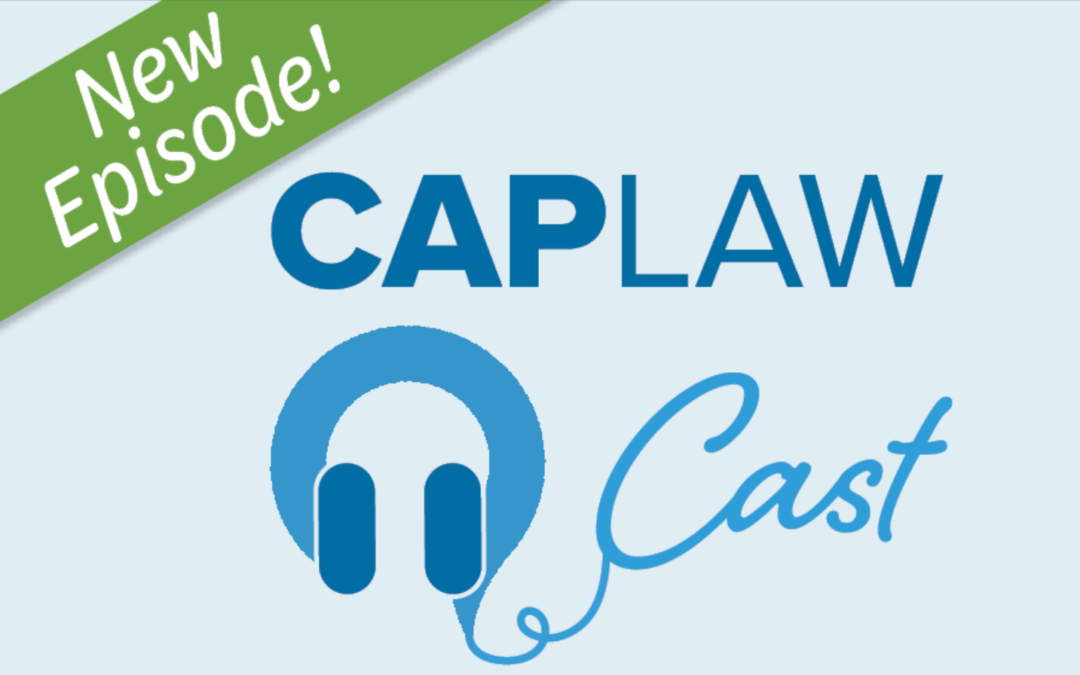Resource Library
All of CAPLAW’s resources and publications are now available in CAPLAW’s new Resource Library. Use the search filters below to find the resource you need.
Featured Resources

Bylaws Toolkit
This updated Bylaws Toolkit will help CAAs develop bylaws that are clear, effective, and up-to-date. The toolkit outlines key concepts for an agency’s bylaws, such as the authority of the Board of...

Uniform Guidance Crosswalk
This Crosswalk focuses on key substantive changes made in 2024 to the Uniform Administrative Requirements, Cost Principles, and Audit Requirements for Federal Awards, 2 CFR Part 200 (Uniform...

Dynamic Duos Podcast
Mutual respect and trust between leaders at a Community Action Agency (CAA) is essential to the stability of the organization. Without a strong relationship between a CAA board chair and executive...

Applying the ACA to Short-Term Employees
With summer approaching and the Affordable Care Act (ACA) in full swing, CAAs may be faced with questions about how the ACA applies to summer or other temporary workers. This set of Frequently Asked Questions addresses the applicability of the ACA to employees who are not traditional year-round...

Working with CAA Personnel Policies
This webinar is intended to help attorneys better understand the legal issues unique to CAAs with respect to their personnel policies and practices. We discuss the human resources directives in the CSBG Organizational Standards and the new overtime rule recently released by the Department of...

Tax-Exempt Law for Nonprofit CAAs
A nonprofit CAA’s federal tax-exempt status is one of its most valuable assets. In this webinar we review the do’s and don’ts of protecting that status. Topics covered include advantages and basic requirements of tax exemption under Internal Revenue Code section 501(c)(3); restrictions and...

Nuts and Bolts of Subgrant Agreements
This webinar is intended to help attorneys better understand the rules that apply to CAAs proposing to subgrant federal funds. We discuss the framework that applies when determining whether a subrecipient or a contractor (vendor) relationship is created. We then talk about the applicable rules...

WIOA Supersedes WIA: A Review of the Changes
On July 22, 2014, President Obama signed the Workforce Innovation and Opportunity Act (WIOA, or the Act), which is designed to help job seekers access employment, education, training, and support services to succeed in the labor market and to match employers with the skilled workers they need to...

Sample Subaward Agreement
CAPLAW's Sample Subaward Agreement provides a template for CAAs and other Community Action network organizations to use as a starting point when seeking to subaward federal funds to partner organizations. The sample agreement also serves as a checklist of the major issues to consider when...

Dynamic Duo: The Board + Executive Director Partnership
Engaged, informed, and enthusiastic executive directors and board members working as a team are essential to the success of a Community Action Agency. This guide, created in collaboration with the National Community Action Partnership, analyzes the board and executive director relationship,...

Indirect Cost Webinar Series Q+A
This Q&A was created pursuant to the webinar series CAPLAW offered earlier this year, Ins and Outs of Indirect Costs Under the Super Circular. We received over 60 questions relating to indirect costs during and after the series and have attempted to answer many of those questions in this...
CSBG Organizational Standards Resources Guide
This online guide compiles various resources developed by CAPLAW and the national Community Action Partnership and links them to specific CSBG Organizational Standards to help Community Action Agencies in their compliance efforts.
